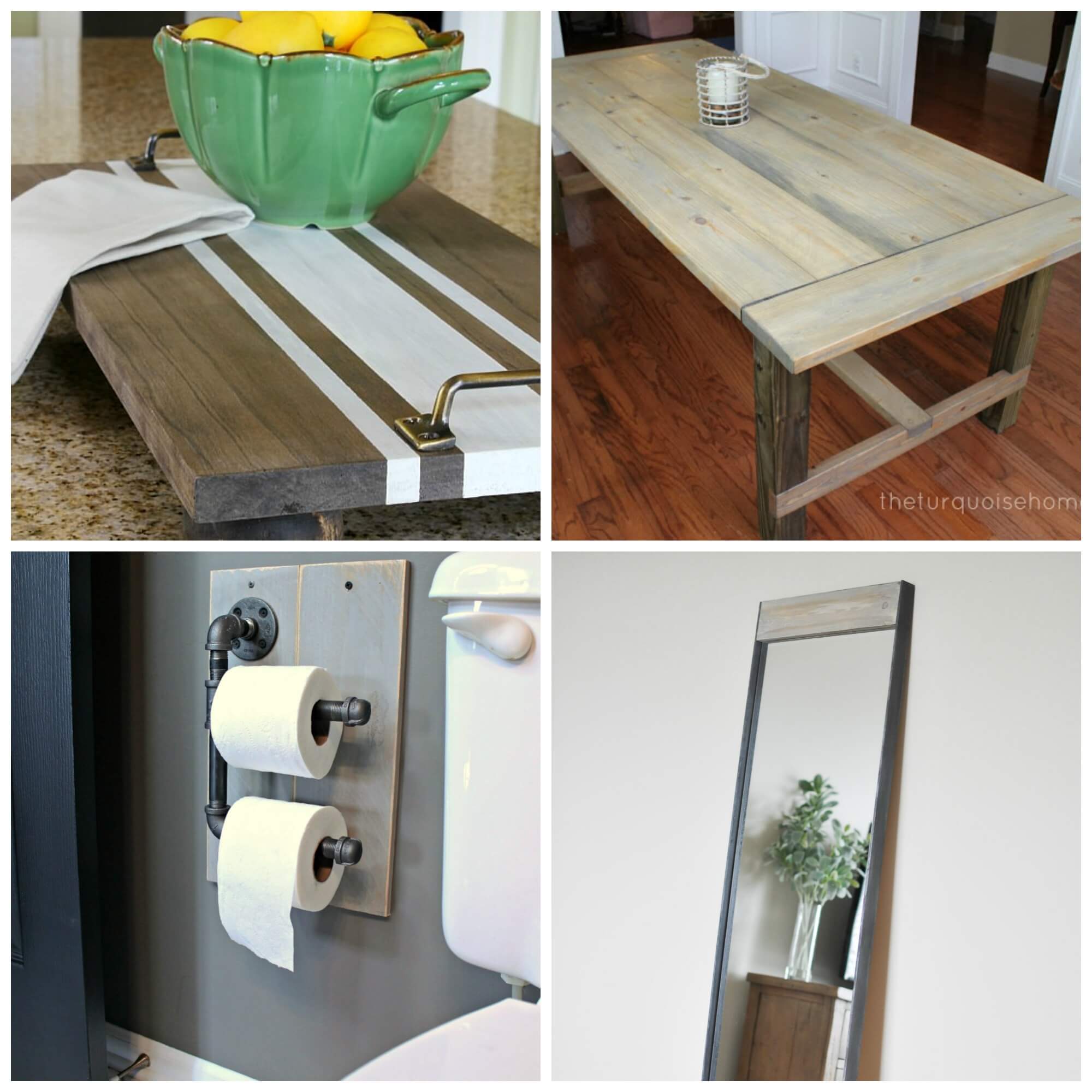DIY Home Projects for Beginners: Forget expensive contractors and embrace the rewarding world of home improvement! This isn’t about becoming a master craftsman overnight; it’s about tackling manageable projects that boost your confidence and save you money. We’ll guide you through simple painting techniques, essential repairs, clever upcycling ideas, and even a touch of beginner-friendly gardening, all with a healthy dose of humor and encouragement.
Get ready to transform your home, one satisfying project at a time!
From patching a leaky faucet to painting a whimsical accent wall, this guide provides clear, step-by-step instructions designed for the complete novice. We’ll cover the basics of tools and safety, emphasizing that DIY doesn’t mean DIY-saster! We’ll equip you with the knowledge and confidence to tackle projects that were once intimidating, turning your home into a canvas for your creativity and a testament to your newfound skills.
Prepare for a journey filled with happy accidents (that we’ll help you fix!), proud moments, and a home that reflects your unique personality.
DIY Home Projects for Beginners: Unleash Your Inner Handy Person
So, you’re thinking about tackling some DIY home projects? Fantastic! Forget the pricey contractors and embrace the satisfaction (and potential cost savings!) of doing it yourself. Whether you’re aiming for a weekend warrior vibe or a full-blown home renovation, this guide will arm you with the know-how to conquer your first DIY adventures. We’ll navigate the world of paintbrushes, spackle, and even a little woodworking – all while keeping things refreshingly simple and hilariously accident-free (mostly!).
Remember, even the most seasoned DIYers started somewhere, and that somewhere is often a slightly messy but ultimately rewarding experience.
Choosing your first project depends on your skill level and available resources. Start small! A single accent wall is far less daunting than a full kitchen remodel. Assess your tool collection – a basic toolkit is all you need to begin. And most importantly, prioritize safety! Always wear appropriate safety gear, and if you’re unsure about anything, don’t hesitate to consult online resources or ask for advice.
Remember, a little preparation goes a long way in preventing DIY disasters (and potential injuries!).
Painting Walls: From Bland to Grand
Painting a wall is a classic beginner project that delivers a huge visual impact with minimal effort. Here’s your step-by-step guide to transforming your walls from drab to fab:
- Prep Work: Clean the wall thoroughly to remove dust and cobwebs. Fill any holes or cracks with spackle and sand smooth. This step is crucial for a smooth, professional finish.
- Paint Selection: Choose a high-quality latex paint for ease of application and cleanup. Consider the sheen – eggshell or satin are popular choices for walls.
- Application: Use a roller for large areas and a brush for edges and corners. Apply two thin coats, allowing each coat to dry completely before applying the next. Don’t forget to cut in (paint the edges) first!
Paint Comparison, Diy home projects for beginners
| Paint Type | Properties | Suitable Surfaces | Cleanup |
|---|---|---|---|
| Latex | Water-based, easy cleanup, low odor | Walls, trim, furniture | Soap and water |
| Oil-Based | Durable, high gloss, longer drying time | Trim, doors, cabinets | Mineral spirits |
| Acrylic | Versatile, water-based, fast drying | Walls, furniture, crafts | Soap and water |
| Chalk Paint | Matte finish, requires waxing, easy distressing | Furniture, crafts | Soap and water |
Painting Furniture: A Transformation Tale

Giving old furniture a new lease on life with paint is incredibly rewarding. Preparation is key! Start by cleaning the piece thoroughly, sanding any rough spots, and applying a primer (especially important for dark-colored furniture). Then, apply your chosen paint in thin, even coats, allowing each coat to dry completely. Finish with a protective sealant for durability.
Simple Repairs and Fixes: Conquering Household Hiccups
Let’s tackle some common household annoyances. These fixes are surprisingly simple and will save you a fortune in repair bills.
- Leaky Faucet Fix: Often, a leaky faucet is due to worn-out washers. Replacing these is a simple task that involves turning off the water supply, removing the faucet handle, and replacing the washers. Plenty of online tutorials guide you through this.
- Patching Wall Holes: Spackle is your best friend here. Apply it to the hole, let it dry, sand it smooth, and paint over it. It’s that easy!
- Drain Unclogging (Chemical-Free): Baking soda and vinegar are your secret weapons. Pour baking soda down the drain, followed by vinegar. Let it fizz, then flush with hot water. This often dislodges minor clogs.
Upcycling and Repurposing: Trash to Treasure
Give your old items a new purpose! Upcycling is environmentally friendly and incredibly creative.
- Old Jars: Transform them into spice racks, pencil holders, or even quirky vases.
- Cans: Turn them into planters, organizers, or even quirky candle holders.
- Pallets: These can be repurposed into shelves, headboards, or even outdoor furniture.
- Old Clothes: Cut them into cleaning rags or sew them into reusable shopping bags.
Organization and Storage Solutions: Taming the Chaos

Decluttering and organizing your space can feel incredibly satisfying. Here are some simple yet effective ideas.
- Closet Organization: Use shelf dividers, drawer organizers, and vertical hanging solutions to maximize space.
- Pantry Organization: Utilize clear containers to see what you have and prevent food waste. Use shelf risers to create more vertical space.
- Simple Shelf Unit: A basic shelf unit can be built using inexpensive lumber and brackets. Measure your space carefully before purchasing materials. The assembly is typically straightforward and often involves just screwing the brackets into the wall and then resting the shelves on the brackets.
- Maximizing Small Spaces: Use vertical space with tall shelving units, stackable storage containers, and under-bed storage solutions.
Beginner-Friendly Gardening Projects: Grow Your Own Greenery
Even a small space can support a thriving herb or vegetable garden. Container gardening is perfect for beginners.
- Planting: Choose easy-to-grow herbs like basil, mint, or rosemary. Select a sunny location and use well-draining potting mix. Follow the instructions on your seed packets or plant labels.
- Plant Care: Water regularly, but avoid overwatering. Fertilize as needed, following the instructions on your fertilizer product. Monitor for pests and diseases and take appropriate action.
- Small Garden Layout: Imagine a 4×4 foot garden bed. In one corner, plant a compact tomato plant, leaving enough space for it to grow. Near it, plant basil in a separate pot for companion planting. In another corner, plant a few rows of lettuce, followed by a small patch of easy-to-grow herbs such as chives or parsley. The remaining space can be filled with colorful flowers that attract pollinators.
Remember to account for sunlight needs – sun-loving plants should be placed in the sunniest areas.
Basic Woodworking Projects: Hammer Time!
Woodworking might seem intimidating, but starting with simple projects is surprisingly easy and rewarding.
- Birdhouse or Small Wooden Box: Many online tutorials offer step-by-step instructions and cut lists. Start with softwoods like pine or cedar, which are easier to work with.
- Sanding and Finishing: Use progressively finer sandpaper to achieve a smooth finish. Apply wood stain or varnish for protection and a polished look. Follow the instructions on your chosen finish product.
Wood Type Comparison
| Wood Type | Workability | Durability | Suitable Projects |
|---|---|---|---|
| Pine | Easy to work with | Moderate | Birdhouses, small boxes |
| Cedar | Easy to work with | High (weather resistant) | Outdoor projects, fences |
| Oak | More challenging to work with | Very high | Furniture, flooring |
| Birch | Moderate workability | High | Cabinets, furniture |
So, there you have it! You’ve successfully navigated the exciting world of DIY home projects for beginners. Remember, the most important tool isn’t a hammer or a paintbrush; it’s your willingness to learn, experiment, and embrace the occasional (and entirely forgivable) mistake. The satisfaction of creating something with your own two hands is unparalleled, and your newly improved home is a testament to your newfound skills.
Now go forth and unleash your inner handyman – or handywoman! The world of DIY awaits!
Q&A: Diy Home Projects For Beginners
What if I mess up a project?
Don’t worry! Mistakes are learning opportunities. Most DIY projects are fixable, and even a “failed” attempt can teach you valuable lessons for future projects. Embrace the imperfections – they add character!
What’s the most important safety precaution?
You also can investigate more thoroughly about diy fall crafts for toddlers to enhance your awareness in the field of diy fall crafts for toddlers.
Always prioritize safety! Wear appropriate safety glasses, gloves, and protective clothing. Read instructions carefully and don’t rush the process. If you’re unsure about a step, seek advice or consult a professional.
How much will these projects cost?
Many beginner-friendly DIY projects are surprisingly affordable. Look for deals on supplies, repurpose materials you already own, and don’t be afraid to get creative with substitutions.
Where can I find more information and inspiration?
The internet is your oyster! Explore websites, blogs, YouTube channels, and social media for countless tutorials, tips, and inspiration. Don’t be afraid to ask questions in online communities.

